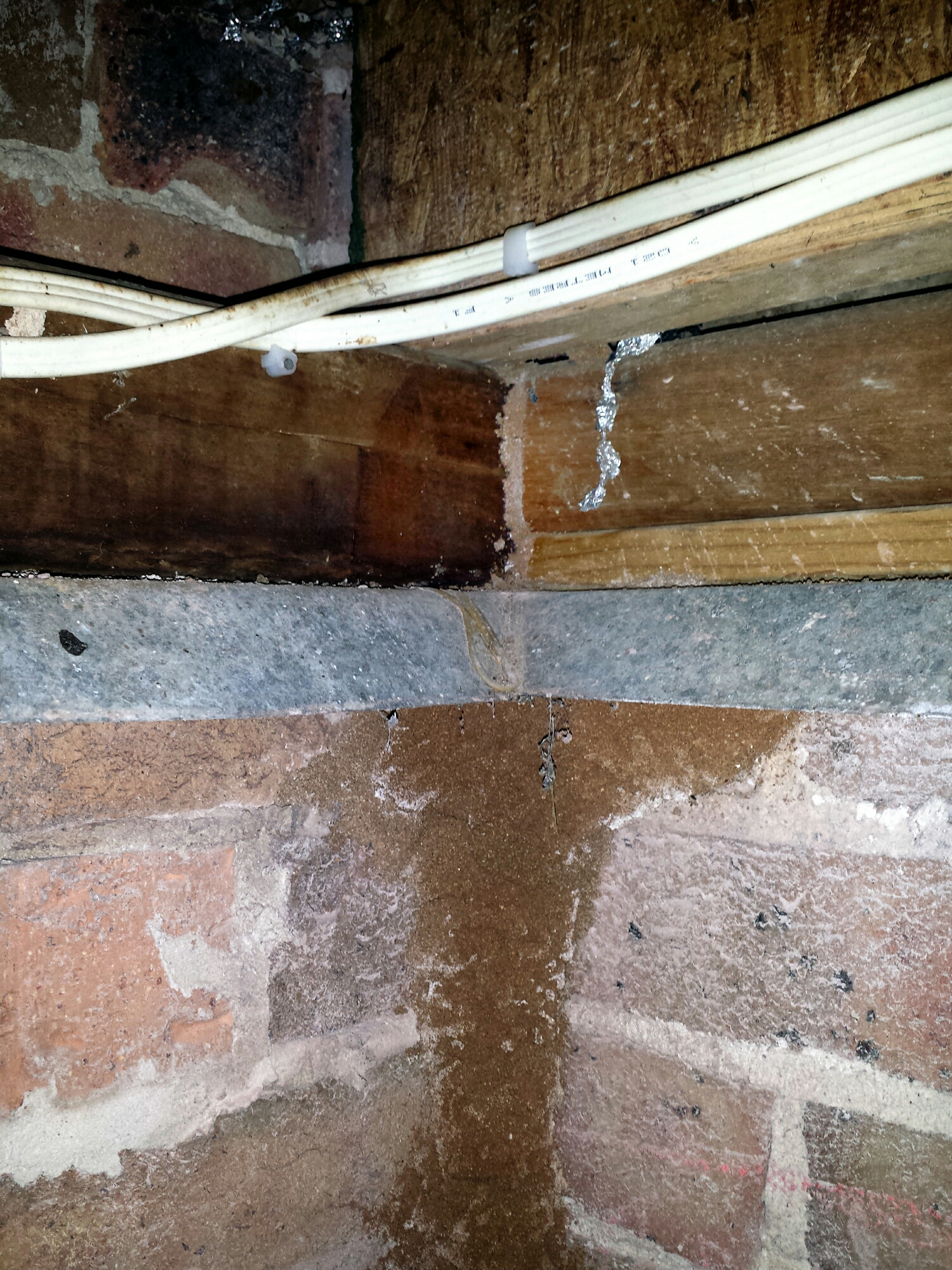Ant Capping is designed to prevent undetected termite entry.
As with all termite management systems, they are primarily designed to force termites out in the open so they can be easily detected during an inspection, or to deter their entry. For these systems to work effectively, 2 conditions must be met:
- The physical barrier system needs to be complete, covering all entry points and forming a continuous barrier around the perimeter of the building.
- The property needs to be regularly inspected to ensure that the system is working correctly and there are no termites trying to infest the property.
Check the following photos that identify common problems with ant capping.
The termites have built a large mud shelter tube under this ant cap, but then you see them mysteriously appear in the timber above the ant cap! If this capping was a continuous barrier for the full width of the brick, they would have to build their mud shelter tube OVER the ant cap.
This explains why termites get in without being seen - the ant capping does not cover the full width of the brick! This does not meet the Australian standard for termite protection.
This ant capping was only partially existent, with an inspection edge that goes off into oblivion. It was not able to prevent the termites getting in a chewing out this frame.
The ant cap on this wall ends up butting up to a timber frame, there's no inspection edge and no surprises the termites got in.
This is the most common failing of ant capping, failing to form a continuous barrier when there is a vertical transition, nothing is preventing the termites coming up between the two piers and into the lower bearer, and it would not be visible until it's too late.








